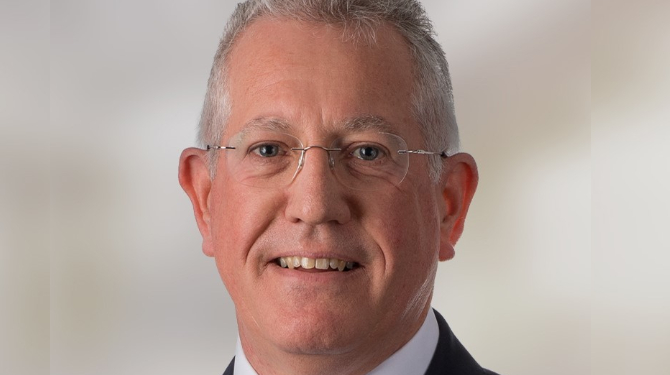Sign up for our free daily newsletter
YOUR PRIVACY - PLEASE READ CAREFULLY DATA PROTECTION STATEMENT
Below we explain how we will communicate with you. We set out how we use your data in our Privacy Policy.
Global City Media, and its associated brands will use the lawful basis of legitimate interests to use
the
contact details you have supplied to contact you regarding our publications, events, training,
reader
research, and other relevant information. We will always give you the option to opt out of our
marketing.
By clicking submit, you confirm that you understand and accept the Terms & Conditions and Privacy Policy
As head of professional services, crisis and litigation at communications firm Infinite Global, Ryan McSharry advises businesses and private clients on their media, brand and marketing communications activity. He is also a crisis, disputes, and litigation specialist, providing counsel to a range of domestic and international clients facing reputational risk.
Why did you pursue a career in public relations?
Many years ago, a friend sent me an advert for a PR job and said: “This will suit you. It’s all champagne and lies.” Now, having been in the industry for a while, I’ve learned that there is less champagne than anticipated and far fewer lies. In fact, so often the focus is on telling the truth in very precise detail. At university, I studied philosophy. I went into the field looking for answers but came out with more questions. Public relations isn’t dissimilar. You’re always trying to get to the bottom of a story so you can advise as effectively as possible. You also develop insight across a very broad set of industries and areas which is a great privilege professionally.
What have you found to be among the biggest misunderstandings in media relations?
“Why aren’t I on the front page of the Financial Times,” would be a common misunderstanding. So often, people don’t grasp what is of interest to the audience. Nor do they always understand their value to a journalist. Many times, they are not the subject of the story but there to facilitate it. When the focus is on an individual or a company, that’s not always a good thing.
What separates a good or effective media spokesperson from a not-so-good one?
The most powerful part of the communications toolkit is emotion, and the most successful campaigns have a high calling to people’s desires. Facts and figures are important but the best PR has personal meaning. After the fatal Virgin Pendolino train crash in 2007, Richard Branson immediately cut short a holiday and went to the site. A photo was taken that showed him crying. That image was worth more than a thousand press releases because it showed the depth of his caring.
Facts and figures are important but the best PR has personal meaning
You work in the crisis area and with a global pandemic continuing to play out, what can companies learn from this event?
It’s been said that no one should waste a good crisis. For those of us who lived through the financial crisis of 2008, we see many similar lessons emerging from the pandemic. For one, there’s never a better time to re-visit your crisis strategy. This is the number one issue on many board agendas today. The world has changed, and it may be time to re-orient your strategy, messaging and positioning in the marketplace. Your plan is only so good as the people named in it and the course of action that it outlines. If it’s not a living document that can be quickly activated, it’s better off staying on the shelf. Crisis of course is something that cuts to the core of your brand. You can fend off day-to-day troubles but when you have done something that contravenes your raison d’etre, you are really in trouble. Once you have lost trust – whether internally or externally, you have lost everything.
Is there any sort of guide you use in crisis situations?
Every situation is different, but I often return to a model known as the OODA Loop, a process for making effective decisions in high-stakes situations. The model was developed by US Air Force Colonel John Boyd and explains the four steps of decisions making: ‘Observe, Orient, Decide and Act’. It involves collecting relevant information, recognising potential biases, deciding and acting, then repeating the process with new information. It is intended to be repeated again and again until a conflict finishes. Each repetition provides more information to inform the next one, making it a feedback loop. If you have some time, it’s worthwhile to look into it.
When you are not putting miles on the clock as a PR advisor, what do you do in your free time?
I am fascinated by art and art history. I’ve taken courses at Sotheby’s and from time to time have even brandished a paint brush myself. Back in the day, I actually sold a few paintings, though mostly for beer money. Thank goodness for the PR business – otherwise I might still be at it.
McSharry recently spoke as part of a panel discussion, Is the Influencer Marketing Bubble About to Burst at the 22 September 2021 Luxury Law Summit at the British Museum. Co-panellists included L’Oréal Associate General Counsel Joanne Loughrey and Gleam Futures Managing Partner Lucy Loveridge.
Click here for more coverage of the Luxury Law Summit
Email your news and story ideas to: [email protected]










